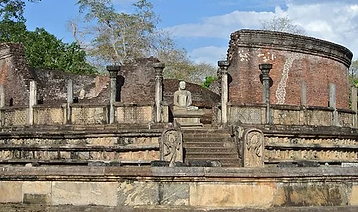




Sri Lanka Heritage

Sri Lanka, formerly known as Ceylon, is a country rich in cultural and historical heritage. Its heritage is influenced by a blend of indigenous cultures, colonial influences, and the contributions of various ethnic groups. Here are some key aspects of Sri Lanka's heritage:
-
Ancient Cities and Archaeological Sites:
-
Anuradhapura: One of the ancient capitals of Sri Lanka, Anuradhapura is home to well-preserved ruins of ancient palaces, monasteries, and monuments, including the sacred Bodhi tree, which is believed to be a sapling from the tree under which Buddha attained enlightenment.
-
Polonnaruwa: Another ancient capital, Polonnaruwa features impressive archaeological sites with ancient temples, statues, and reservoirs.
-
Sigiriya: Known as the "Lion Rock," Sigiriya is a UNESCO World Heritage Site featuring an ancient rock fortress with remarkable frescoes and a palace built on top of a massive rock.
-
-
Dambulla Cave Temple:
-
This complex of cave temples is adorned with intricate murals and over 150 Buddha statues, making it a significant religious and artistic site.
-
-
Cultural Triangle:
-
The Cultural Triangle, formed by the cities of Anuradhapura, Polonnaruwa, and Kandy, is a UNESCO World Heritage Site that encompasses the rich cultural and historical heritage of the island.
-
-
Kandy and the Temple of the Tooth:
-
Kandy is a city with a unique cultural identity. The Temple of the Tooth Relic (Sri Dalada Maligawa) in Kandy houses the relic of the tooth of the Buddha and is an important pilgrimage site.
-
-
Colonial Heritage:
-
Sri Lanka has a colonial heritage influenced by the Portuguese, Dutch, and British. Galle Fort, built by the Dutch in the 17th century, is a UNESCO World Heritage Site and a well-preserved example of European colonial influence.
-
Temple of tooth reliqe Kandy

Cave Temple Dambulla

Dutch fort Galle

Abayagiriya Stupa Anuradapura

Rock Fortress Sigiriya

Watadageya Polonnaruwa
